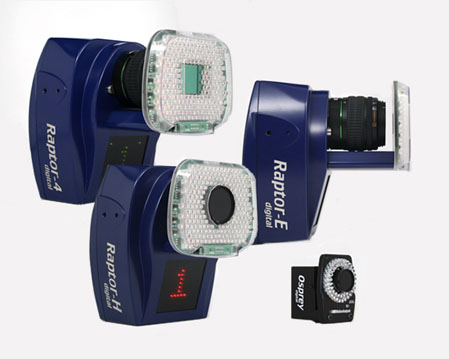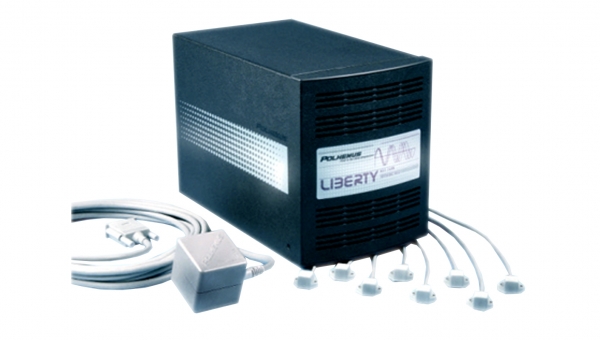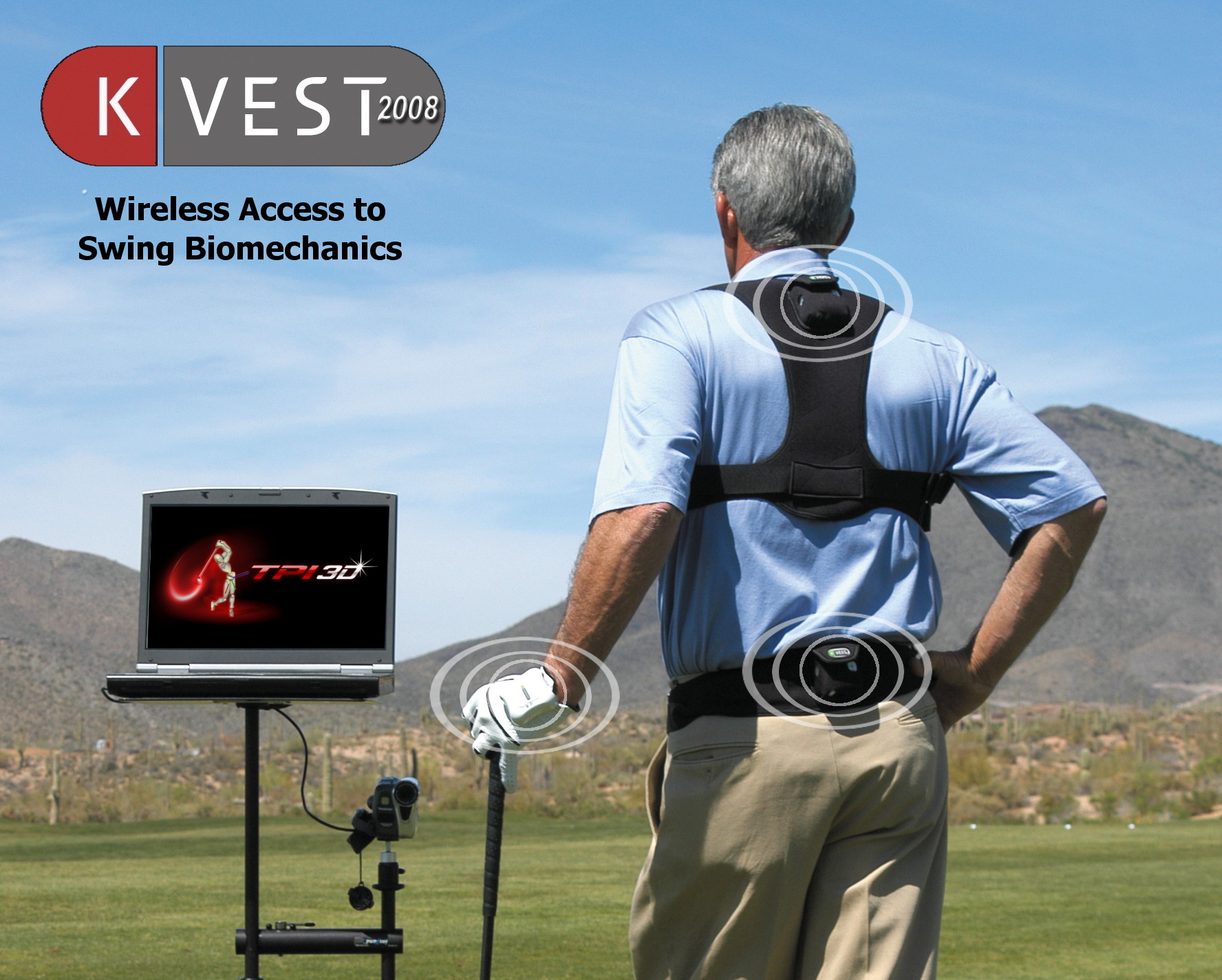IMPROVE MY GAME
Articles
Capture Methods Overview
There are several different motion capture and analysis technologies that can be used to analyze the golf swing in three-dimensions (3D). I will discuss three examples, passive optical (e.g. Motion Analysis Corporation), real-time electromagnetic (e.g. Polhemus and Advanced Motion Measurement) and inertial sensors (e.g. K-Vest).
Passive Optical Systems

With these systems the golfer has reflective plastic balls attached on positions such as limb joints and the club. High-speed video cameras with ring-lights around their lenses are used to film the golfer during the swing. The ring-lights cause the markers to fluoresce brightly. The computer captures the images from the cameras, digitizes them and calculates the X and Y coordinates of each bright point.
In order to compute data in 3D, several cameras must be used, usually eight to ten cameras spaced evenly around the golfer. The computer creates three-dimensional coordinates from each marker by combining data from at least two cameras.
These cameras can be very fast, capable of taking pictures at speeds of up to and even above, 1000 pictures per second. In a golf swing of approximately two seconds, the computer will have about 2000 pictures from each camera, to use, to create 3D coordinates. When capturing a 100 mph swing at 1000 pictures per second, the club head will move about two inches between pictures, at its fastest point. This sample speed gives us plenty of data to calculate the dynamics of the golfer and the club during the swing.
Advantages
Minimal interference. The strength of the optical system is that passive, light, plastic markers are all that is attached to the golfer; no wires and no batteries are needed, in fact the markers are so light, they can even be put on the club.
High speed. Sample rates of up to 1000 samples per second and above can be achieved.
Disadvantages
Complex setup. The cameras must be precisely placed to get the best view of the markers. Markers must always be in view to be tracked; if a marker is hidden it cannot be tracked.
Controlled lighting. Since the system works on contrast between the markers and the background, it does not work well in the presence of bright lights such as sunlight; hence it is very difficult to successfully capture a swing outside. Newer systems like the MAC Rapture system can operate in full sunlight and lighting is not a disadvantage.
Tracking problems. Since each marker looks the same it is sometimes difficult to have the system automatically identify each point and crossover and misidentification may occur.
Price. Since many cameras must be used systems are expensive.
Electromagnetic Systems 
Electromagnetic systems use a transmitter and multiple small sensors. The transmitter can be a 4-inch cube containing three wire coils wound perpendicular to each other. The sensors also have three wire coils inside but are much smaller, generally about a half inch square.
The transmitter creates an alternating magnetic field with an effective radius of about six feet. The sensors measure the magnetic field wherever they are located. The signals from the sensors are fed to an electronic control unit, which is essentially a dedicated computer. From the raw sensor voltages the electronic unit calculates the position and orientation of the sensors in real-time at a rate of up to 240 samples per second.
Each sensor calculates six-degrees-of-freedom and is essential a local coordinate system with an origin, and three axes. To completely describe the motion of a body segment, only one sensor is needed per segment.
Advantages
Real-time. The data is calculated and can be displayed on the computer in real-time, that is, as the golfer moves, the 3D model of the golfer on the computer screen moves in synchrony. This is very helpful for feedback and learning drills.
No missing data. Unlike optical systems there are no hidden or lost points, since the body is transparent to the magnetic field. The sun does not affect the sensors, so good swing data is very easy to collect, inside or out.
One sensor per segment. Each sensor produces six-degrees-of-freedom data, which means that only one sensor is needed on each body segment, compared to many markers per segment with optical systems.
Price. Generally electromagnetic systems are less expensive than optical systems.
Disadvantages
Wires. Because the sensors are actively powered, wires or batteries are needed.
Distortion. Large metal objects in the measurement field can distort the electromagnetic field and cause inaccurate readings. Also the sensors cannot be directly attached to a metal object such as a golf club. Hence graphite clubs must be used.Lower Speed. Not as fast as some optical systems.
Inertial Sensor Systems 
Companies like K-Vest (right) are distributors of inertial sensor based analysis systems. Inertial sensors are sensors based on inertia. The data of inertial sensors is collected through internal accelerometers and gyroscopes inside the sensor. The TPI-3D software platform currently operates with the K-Vest system.
Each sensor calculates three-degrees-of-freedom and is completely wireless.
Advantages
Real-time. The data is calculated and can be displayed on the computer in real-time, that is, as the golfer moves, the 3D model of the golfer on the computer screen moves in synchrony. This is very helpful for feedback and learning drills.
No missing data. Unlike optical systems there are no hidden or lost points, since the body is transparent to the magnetic field. The sun does not affect the sensors, so good swing data is very easy to collect, inside or out.
One sensor per segment. Each sensor produces three-degrees-of-freedom data, which means that only one sensor is needed on each body segment, compared to many markers per segment with optical systems.
Price. Generally inetrial sensor systems are less expensive than both electromagnetic and optical systems.
Disadvantages
Degree of Freedom. As stated earlier, these systems only calculate 3-degrees of freedom. This does allow the calculation of the kinematic sequence, but it can not determine positions (sway, thrust and lift).